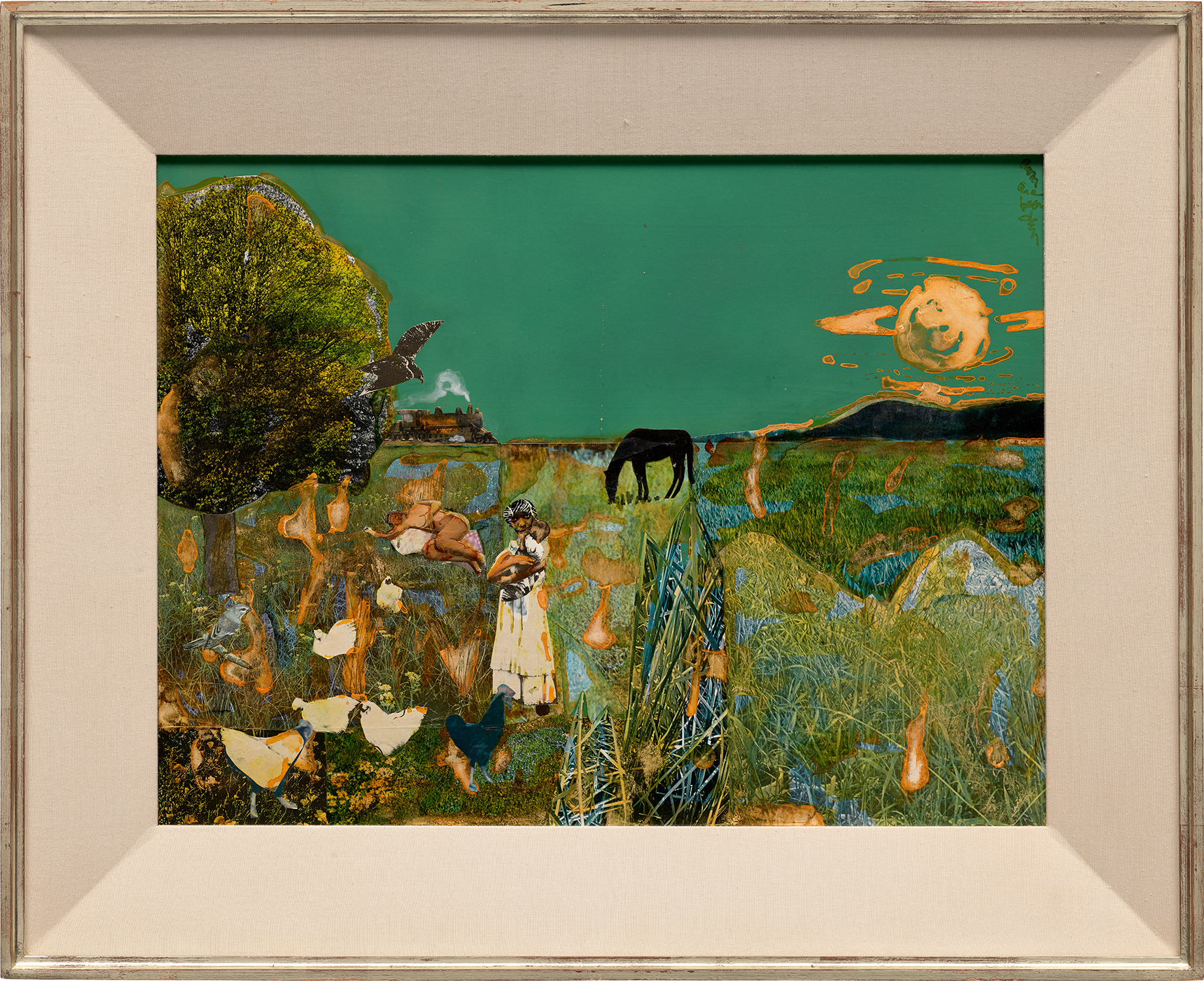



133
Romare Bearden
Sunset Limited from Profile/Part I, The Twenties: Mecklenburg County
Further Details
Full-Cataloguing
Romare Bearden
American | B. 1911 D. 1988A master of collage, Romare Bearden has become synonymous with his layered scenes of black life – past, present, and imagined. Born in North Carolina in 1911, Bearden was raised in New York in the heart of the Harlem Renaissance. In the 1930s, he studied at the Arts Student League with George Grosz and was involved with 306, a Harlem art school and workshop where his cousin by marriage, fellow artist Charles Alston, was a leading instructor. Though Bearden won major recognitions in his lifetime, Time art critic Robert Hugues proclaimed in 1991 that “Bearden got left out of the history books” – an oversight that has since been rectified with major retrospectives worldwide. In 2003 the National Gallery of Art held a retrospective of Bearden’s work, the first for an African-American artist in the museum’s history, with the exhibition firmly cementing his legacy as one of the great innovators of the 20th century.
Bearden started making two-dimensional collages in the early 1960s as "an attempt to redefine the image of man in terms of the Black experience”. Bearden’s collages seamlessly integrate painting, magazine clippings and old paper like a jigsaw puzzle into evocative images that fuse snippets of Harlem life with images of the American South, with references to art history, Classical myth, religion and popular culture. "When I conjure these memories, they are of the present to me," Bearden explained. "Because after all, the artist is a kind of enchanter in time." The way Bearden employed collage came out of his life and culture. In a 1977 interview with New Yorker writer Calvin Tomkins, Bearden described how as a young man, “I’d take a sheet of paper and just make lines while I listened to records, a kind of shorthand to pick up the rhythm and the intervals.” The improvisational nature of jazz music, Christian iconography, patchwork quilts, rooms wallpapered with old newspaper recalled from childhood summers in North Carolina, his lifelong study of both Western and African art art –all infused in Bearden’s collages.
Roberta Smith pointed out Bearden’s enduring relevance and unusual “of-the-moment” in her 2011 The New York Times review: “For one thing the improvisational cross-fertilizing of art mediums that Bearden helped pioneer via collage is more and more the norm; for another, paper has probably never been more popular as an art material, for work in both two and three dimensions. Most obviously the scaled-up version of collage that he favored and his propensity for pieced-together, abstraction-infused figures have many echoes in the work of contemporary artists, from Mark Bradford to Anya Kielar to Matthew Monahan.” His enduring legacy also continues to live on in The Studio Museum in Harlem, of which he was an active founding member in 1968.